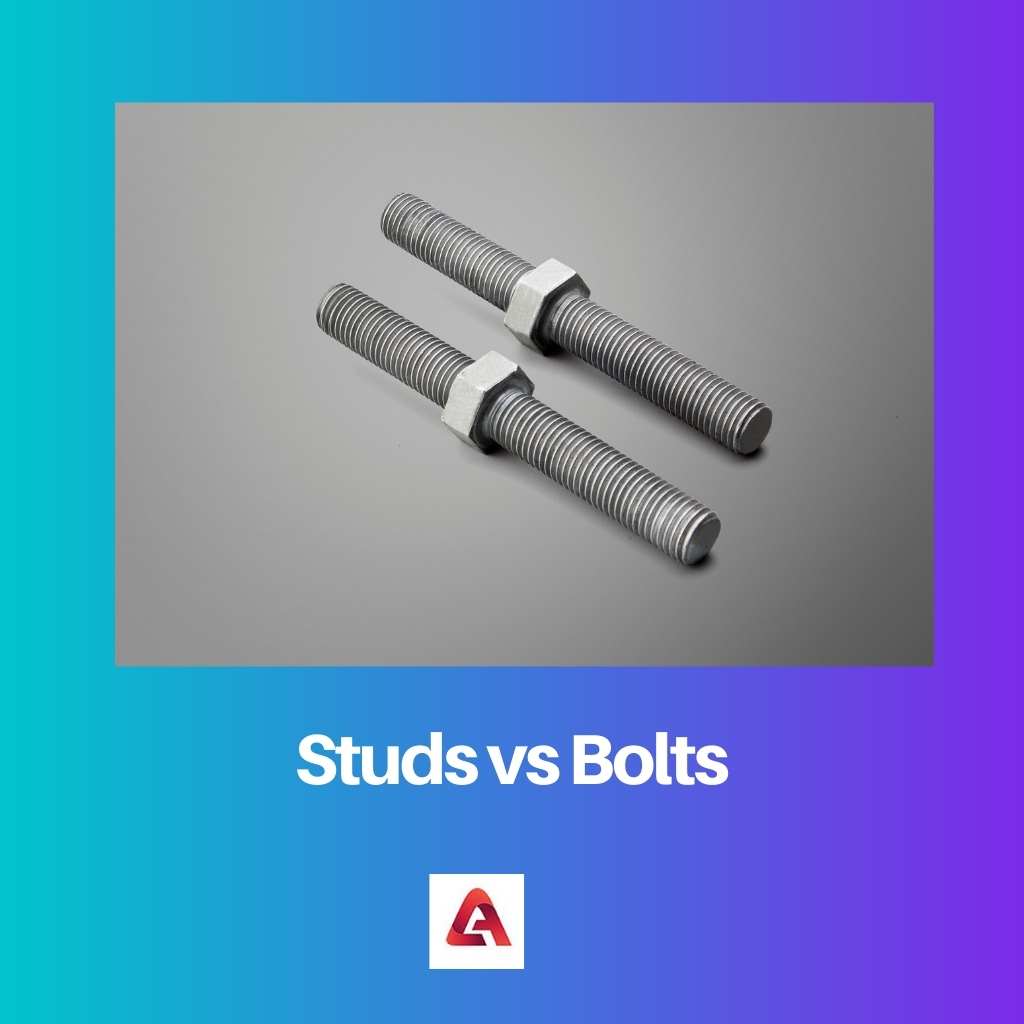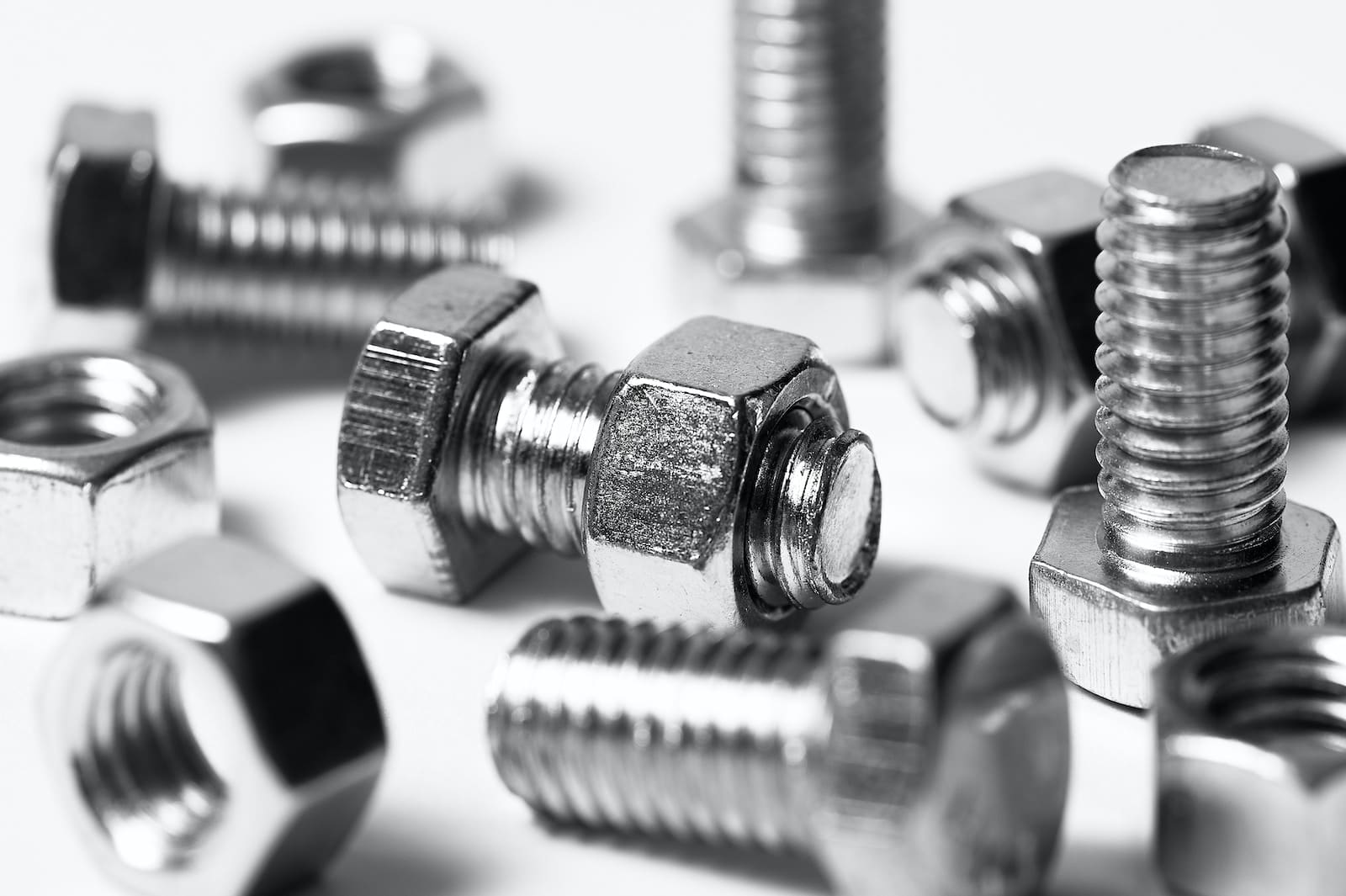The purpose of studs is that they form walls and might bring vertical structural masses or be non-load-bearing, which includes partition walls, which best separate areas whilst the purpose of bolts is that they’re used to maintain substances or items together or to put items.
Key Takeaways
- Studs are threaded fasteners without a head, used to join components, and secured with nuts on both ends.
- Bolts are threaded fasteners with a head, designed to be inserted through holes in the joined parts and secured with a nut.
- Studs provide greater resistance to stress and vibration, while bolts are easier to install and remove.
Studs vs Bolts
Studs are threaded rods with threads on both ends that are used to create a fixed joint between two objects, while bolts are threaded fasteners with a smooth shank that are used to attach objects to a surface by passing the bolt through a hole and tightening the nut on the other end.

A stud is a vertical framing member which forms a part of a wall or partition. Also referred to as wall studs, they’re an essential element of frame production and are commonly fabricated from timber.
However, metallic studs are more and more popular, especially for non-load-bearing partitions and firewalls.
A bolt is a kind of fastener, crafted from metal, that contains a head at one end, a chamfer on the other, and a shaft characterized through an outside helical ridge referred to as a ‘thread’.
Bolts are used to preserve substances or gadgets together or to place gadgets.
Comparison Table
| Parameters of Comparison | Studs | Bolts |
|---|---|---|
| Size | It is larger. | It is smaller in size. |
| Application | They are used for framing work, supporting walls, windows, and doors. | These are used to hold objects, position objects, and join two pieces. |
| Largest manufacturer | AB Steel | W.W. Grainger |
| Types | These are mainly of two types- full-bodied and undercut studs. | These are mainly of three types- carriage, hex, and lag bolts. |
| Forces involved | No force is needed. | Rotational and linear forces. |
What are Studs?
A stud is simply a piece of threaded bar. This frequently resembles a machine screw without ahead, despite the fact that a few studs have heads that get completely integrated into the element they’re connected to.
Studs are frequently designed to be completely connected to at least one element, providing a method of attaching every other element along with a nut.
This form of the stud can be welded, swaged, or bonded to connect it and can, therefore, have a small head to permit this.
Alternatively, a stud might also additionally have a self-tapping thread at one give up, meant to be completely screwed right into an element, and a system thread at the opposite give up to just accept a nut.
Studs shape partitions and can deliver vertical structural hundreds or be non-load-bearing, consisting of in partition partitions, which handiest separate spaces.
They maintain in location the windows, doors, indoors finish, outside sheathing or siding, insulation, and utilities and assist provide the form to a building.
There are many different types of studs like king stud, jack stud, cripple stud, and lots more. Most antique homes do have stud partitions.
What are Bolts?
A bolt is a simple attachment that is used to attach two or more pieces of equipment.
The bolts form a virtual adhesive on the component in a non-complete manner, i.e. the components may be removed from one another with the use of the appropriate tool.
A bolt is composed of two pieces, which are the head and the shank.
It is the head of the bolt that is referred to as the top section. It is also possible for the head to have certain forms. To determine the shape of the bolt head, it is necessary to know why the bolt is being used.
The shank of a bolt refers to the cylindrical portion of the bolt. The bolt’s tail end has been threaded for a long enough period of time that a nut may be threaded onto it without slipping.
Furthermore, the stop of the shank has been chamfered to allow for easy insertion into a hollow and attachment of a nut to it.
A variety of metals and alloys are used in the fabrication of the bolt, including aluminum, brass, copper alloy, plastic, steel, hardened steel, stainless steel, and titanium.
According to the environment in which it will be used, the materials used in the manufacture of the bolt are chosen carefully.

Main Differences Between Studs and Bolts
- Studs are tremendously larger than bolts so that they pass deeper into the threaded holes for extra applications.
- Studs are used to repair cable ties whilethe bolt prevents fluid from leaking via the holes withinside the machine.
- Studs may be diagnosed through their threaded ends and an unthreaded center phase of the shaft. On the contrary, bolts are best defined as lengthy shafts and are normally most effective partly threaded.
- While a stud requires using a nut screw to grow or loosen tension among the elements it holds together whereas the bolt has a wonderful flat head on one aspect as a way to loosen or grow the implemented tension.
- In general, a stud may be fixed into a region without using a clamping pressure carried out through tightening. On the other hand, bolts want to be turned around in place with a wrench of a screwdriver.

- https://www.sciencedirect.com/science/article/pii/S1350630700000133
- https://www.sciencedirect.com/science/article/pii/S1350630713003002
